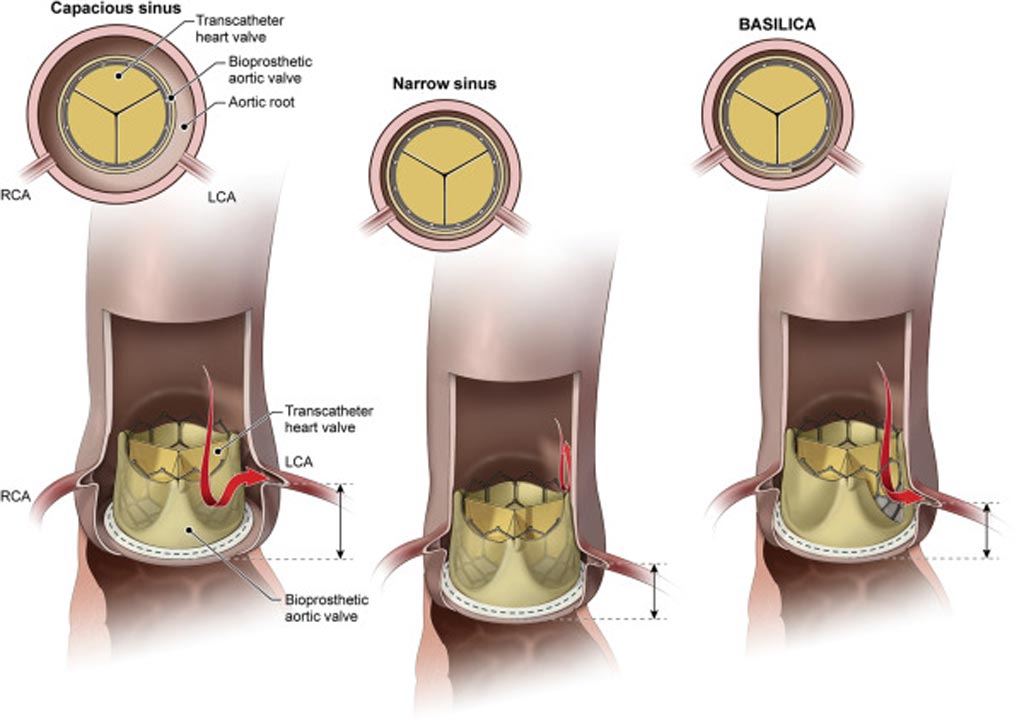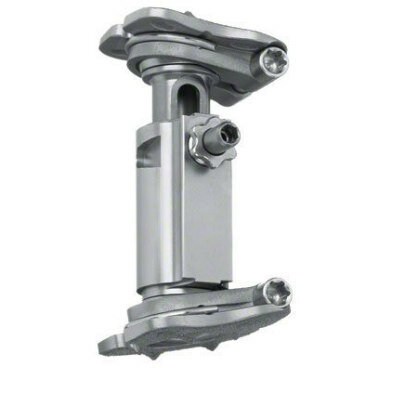Lacerating Aortic Leaflets Can Prevent TAVR Obstructions
By HospiMedica International staff writers
Posted on 17 Apr 2018
A new study describes how an innovative surgical technique can help prevent coronary artery obstruction during transcatheter aortic valve replacement (TAVR).Posted on 17 Apr 2018
Developed by researchers at the U.S. National Heart, Lung and Blood Institute (NHLBI; Bethesda, MD, USA), Emory University Hospital (Atlanta, GA, USA), and other institutions, the bioprosthetic aortic scallop intentional laceration to prevent coronary artery obstruction (BASILICA) technique involves cutting the pericardial leaflets using catheter electrosurgery to traverse and split the aortic leaflet down the center line. TAVR is then performed as usual, followed by leaflet splaying.

Image: Lacerating the aortic valve reduces risk of obstructions following TAVR (Photo courtesy of NHBLI).
The researchers first tested the procedure in a swine model, with TAVR followed by lacerating and splaying of bovine pericardial leaflets. The results showed that BASILICA was successful in the pigs, in both left and right cusps; necropsy revealed full-length lacerations with no collateral thermal injury. The procedure was then offered (on a compassionate basis) to seven patients with high risk of coronary obstruction who were ineligible for surgical aortic valve replacement (SAVR). All patients underwent successful TAVR, with no coronary obstruction, stroke, or major complications. The study was published on April 2, 2018, in the Journal of the American College of Cardiology: Cardiovascular Interventions.
“In some patients whose hearts have uncommon structures, such as unusually large valve leaflets or small aortic roots, the large leaflets block the flow of blood to the coronary arteries as the new valve's scaffolding opens,” said lead author Robert Lederman, MD, of the NHLBI division of intramural research. “These patients are either not eligible for conventional TAVR, or they are at high risk for it. The previous technique of using a stent to open the coronary artery appears to have poor long-term outcomes.”
The percutaneous treatment of severe aortic valve disease using TAVR prosthetic valve replacement, without the need for open-heart surgery or cardiopulmonary bypass, is faster and less invasive than current open-heart procedures. TAVR has so far been proven effective in high-risk and inoperable patients, and could soon become the standard of care, even in moderate and low surgical risk patients.
Related Links:
U.S. National Heart, Lung and Blood Institute
Emory University Hospital














